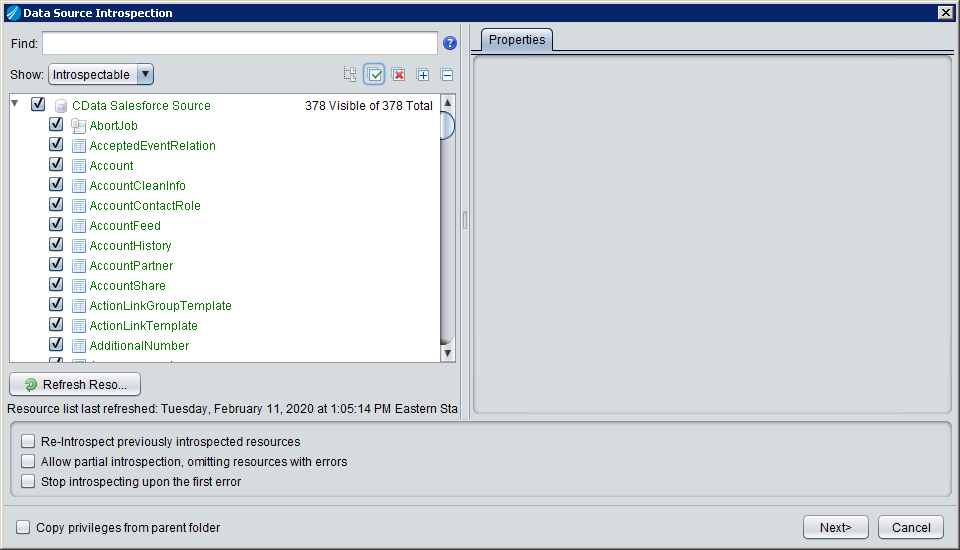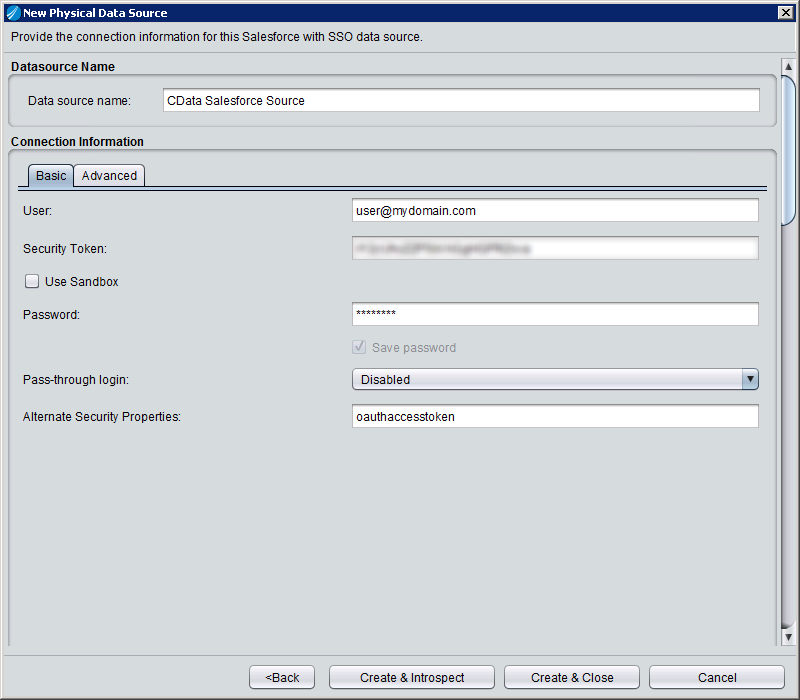Discover how a bimodal integration strategy can address the major data management challenges facing your organization today.
Get the Report →Access Live JotForm Data in TIBCO Data Virtualization
Use the CData TIBCO DV Adapter for JotForm to create a JotForm data source in TIBCO Data Virtualization Studio and gain access to live JotForm data from your TDV Server.
TIBCO Data Virtualization (TDV) is an enterprise data virtualization solution that orchestrates access to multiple and varied data sources. When paired with the CData TIBCO DV Adapter for JotForm, you get federated access to live JotForm data directly within TIBCO Data Virtualization. This article walks through deploying an adapter and creating a new data source based on JotForm.
With built-in optimized data processing, the CData TIBCO DV Adapter offers unmatched performance for interacting with live JotForm data. When you issue complex SQL queries to JotForm, the adapter pushes supported SQL operations, like filters and aggregations, directly to JotForm. Its built-in dynamic metadata querying allows you to work with and analyze JotForm data using native data types.
Deploy the JotForm TIBCO DV Adapter
In a console, navigate to the bin folder in the TDV Server installation directory. If there is a current version of the adapter installed, you will need to undeploy it.
.\server_util.bat -server localhost -user admin -password ******** -undeploy -version 1 -name API
Extract the CData TIBCO DV Adapter to a local folder and deploy the JAR file (tdv.api.jar) to the server from the extract location.
.\server_util.bat -server localhost -user admin -password ******** -deploy -package /PATH/TO/tdv.api.jar
You may need to restart the server to ensure the new JAR file is loaded properly, which can be accomplished by running the composite.bat script located at: C:\Program Files\TIBCO\TDV Server <version>\bin. Note that reauthenticating to the TDV Studio is required after restarting the server.
Sample Restart Call
.\composite.bat monitor restartOnce you deploy the adapter, you can create a new data source in TDV Studio for JotForm.
Create a JotForm Data Source in TDV Studio
With the CData TIBCO DV Adapter for JotForm, you can easily create a data source for JotForm and introspect the data source to add resources to TDV.
Create the Data Source
- Right-click on the folder you wish to add the data source to and select New -> New Data Source.
- Scroll until you find the adapter (e.g. JotForm) and click Next.
- Name the data source (e.g. CData JotForm Source).
Fill in the required connection properties.
Start by setting the Profile connection property to the location of the JotForm Profile on disk (e.g. C:\profiles\JotForm.apip). Next, set the ProfileSettings connection property to the connection string for JotForm (see below).
JotForm API Profile Settings
You will need to find your JotForm API Key in order to authenticate. To obtain an API Key, go to 'My Account' > 'API Section' > 'Create a New API Key'. Once you've created your new API Key, you can set it in the ProfileSettings connection property.
Custom Enterprise API Domains
Enterprise customers of JotForm are given custom API domains to connect to, rather than the default 'api.jotform.com' domain. If you are an enterprise JotForm customer, then set Domain to you custom API hostname, such as 'your-domain.com' or 'subdomain.jotform.com', inside the ProfileSettings connection property. Conversely, if you do not have a custom domain and still need to connect to 'api.jotform.com', then leave Domain undefined and set only APIKey.
![Filling in Connection Information (Salesforce is shown.)]()
- Click Create & Close.
Introspect the Data Source
Once the data source is created, you can introspect the data source by right-clicking and selecting Open. In the dashboard, click Add/Remove Resources and select the Tables, Views, and Stored Procedures to include as part of the data source. Click Next and Finish to add the selected JotForm tables, views, and stored procedures as resources.

After creating and introspecting the data source, you are ready to work with JotForm data in TIBCO Data Virtualization just like you would any other relational data source. You can create views, query using SQL, publish the data source, and more.







